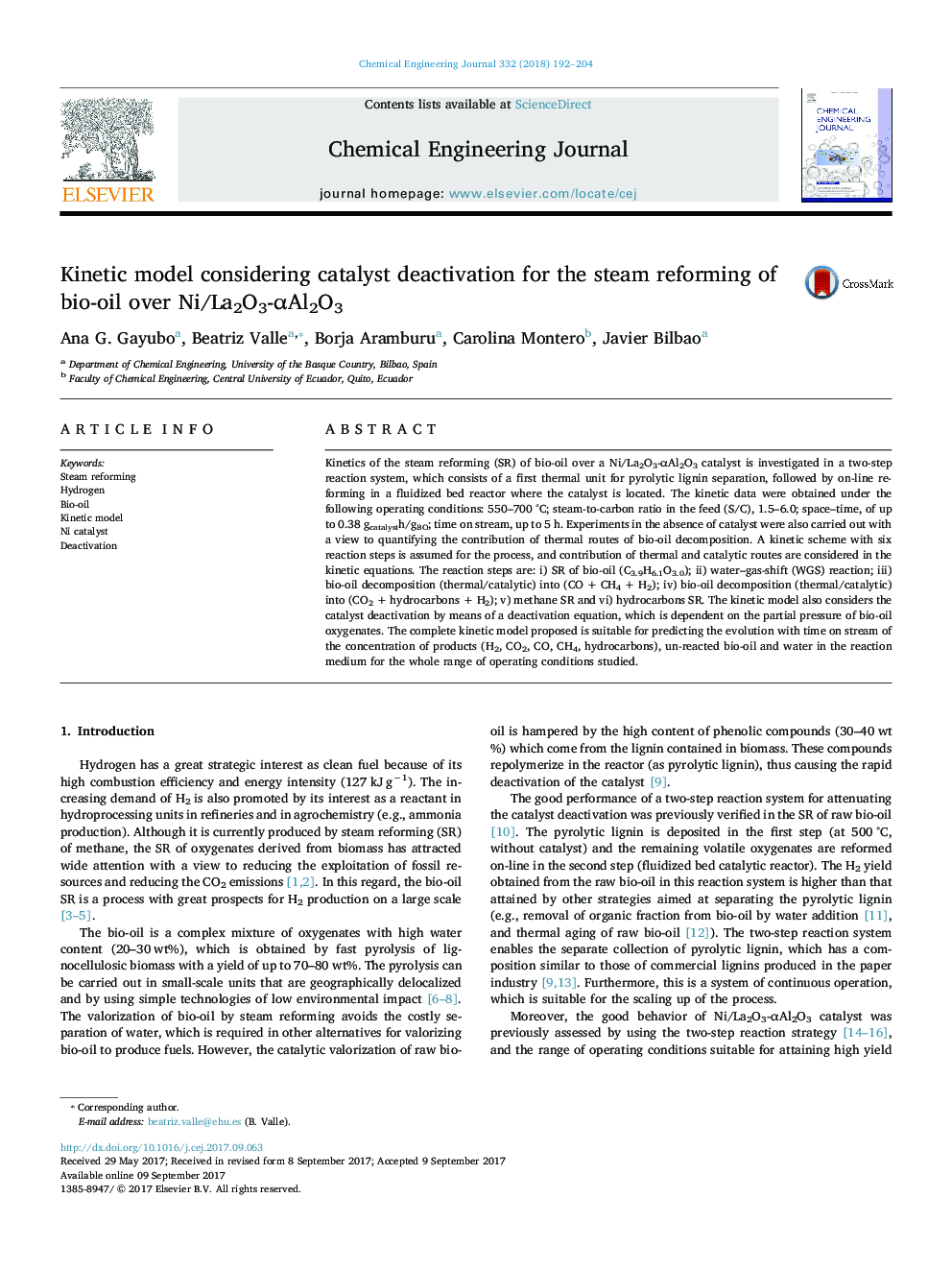| کد مقاله | کد نشریه | سال انتشار | مقاله انگلیسی | نسخه تمام متن |
|---|---|---|---|---|
| 6464956 | 1422946 | 2018 | 13 صفحه PDF | دانلود رایگان |

- A kinetic model for steam reforming of bio-oil over a Ni-based catalyst is proposed.
- Kinetic data were obtained from raw bio-oil in a continuous two-step system.
- Operating conditions: 550-700 °C; S/C, 1.5-6; space-time, 0-0.38 gcatalysth/gbio-oil.
- Contribution of bio-oil thermal decomposition is considered in kinetic equations.
- The model predicts suitably the concentration of all the reaction medium compounds.
Kinetics of the steam reforming (SR) of bio-oil over a Ni/La2O3-αAl2O3 catalyst is investigated in a two-step reaction system, which consists of a first thermal unit for pyrolytic lignin separation, followed by on-line reforming in a fluidized bed reactor where the catalyst is located. The kinetic data were obtained under the following operating conditions: 550-700 °C; steam-to-carbon ratio in the feed (S/C), 1.5-6.0; space-time, of up to 0.38 gcatalysth/gBO; time on stream, up to 5 h. Experiments in the absence of catalyst were also carried out with a view to quantifying the contribution of thermal routes of bio-oil decomposition. A kinetic scheme with six reaction steps is assumed for the process, and contribution of thermal and catalytic routes are considered in the kinetic equations. The reaction steps are: i) SR of bio-oil (C3.9H6.1O3.0); ii) water-gas-shift (WGS) reaction; iii) bio-oil decomposition (thermal/catalytic) into (CO + CH4 + H2); iv) bio-oil decomposition (thermal/catalytic) into (CO2 + hydrocarbons + H2); v) methane SR and vi) hydrocarbons SR. The kinetic model also considers the catalyst deactivation by means of a deactivation equation, which is dependent on the partial pressure of bio-oil oxygenates. The complete kinetic model proposed is suitable for predicting the evolution with time on stream of the concentration of products (H2, CO2, CO, CH4, hydrocarbons), un-reacted bio-oil and water in the reaction medium for the whole range of operating conditions studied.
Journal: Chemical Engineering Journal - Volume 332, 15 January 2018, Pages 192-204